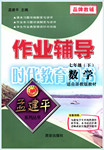题目内容
Perhaps the most challenging material you read at school is poetry. Though the message of some poems may be very simple, the way poets put words together often makes this message elusive. When you read a poem, you should begin by trying to understand what the poet is saying on the surface, then examine the way the poet expresses this content, and finally decide how the poem's meaning is created. Here are some steps to read a poem.
First, read the poem once slowly aloud without writing or marking anything. Don't stop until you finish the poem, even if you don't know the meaning or pronunciation of a word. When you've finished, think it over for a moment on any words, images, and characters that caught your attention. Then read the poem again silently. When you come to a word you don't know, look it up in the dictionary.
Understand the meaning of figurative (比喻的)language. Figurative language doesn't mean exactly what it says; instead, it suggests meanings. For example, in the line “Love, all alike, no season knows”, the poet doesn't mean love is unfamiliar with four seasons. Love cannot know anything at all; only people can know something. Thus, the poet is personifying(拟人化) love, giving it human qualities.
Examine and think about the poet's use of language. Why, for example, did the poet choose to compare his love to a red rose instead of a tree or a bird? We can use associations: we usually associate roses with beauty and love, but we also know a rose bush has thorns (刺). All of these associations may not be right for a particular poem, but many of them probably will.
Finally, read the poem one more time aloud.Practice using pauses and stress to make the poem's meaning come alive.
1.The underlined word “elusive” in Paragraph 1 probably means “________”.
A.easy B. interesting
C.difficult D. boring
2.What should we put on the first place when reading a poem?
A.The form of the poem.
B.The content of the poem.
C.The meaning of the poem.
D.The language of the poem.
3.When reading a poem for the first time, we should________.
A.try to understand new words
B.examine the poem's language
C.try to understand its meaning well
D.avoid being stopped by new words
4.We can learn from the passage that figurative language________.
A.is useful in expressing love
B.helps us understand new ideas
C.is easy for most readers to understand
D.should be repeated while reading a poem
1.B
2.C
3.D
4.B
【解析】
试题分析:本文是一篇说明文,介绍阅读诗歌的步骤。
1.C词义猜测题。画线词所在句中的Though暗示前后两个分句之间为转折关系。根据前半句中的fairly simple可知,后半句中说明的是:诗的写作形式常常使理解诗歌变得困难,故选difficult。,故选C。
2.B细节理解题。根据第一段第三句When you read a poem, you should begin by trying to understand what the poet is saying on the surface可知,读诗的时候应该将理解诗的内容放在首位. 可知选B。
3.D细节理解题。根据第二段前两句可知,在读第一遍的时候,我们不应该因生词的影响而停下来,而是要将整首诗读完,故选D。
4. 推理判断题。文章第三段提到Figurative language doesn't mean exactly what it says; instead, it suggests meanings.由此判断诗歌中的比喻词句不仅表达字面意思,还隐含着深层的意义。由此可推知,这些比喻有助于读者理解诗歌的含义。故选B。
考点:考查科普知识类短文阅读

 作业辅导系列答案
作业辅导系列答案 同步学典一课多练系列答案
同步学典一课多练系列答案面对中学生“出国热”,社会对此有不同的看法。请你以Studying Abroad为题,根据以下提供的信息,谈谈自己的看法。
advantages | disadvantages |
1.良好的语言环境,更利于语言学习。 2.拓宽视野,学习国外先进的科学技术。 3.传播各民族间的不同文化。 | 1.年纪小,缺乏生活经验,自立能力差。 2.情感孤独,思乡。 3.生活学习费用高。 |
注意:1.第一句已为你写好,不计入总词数。
2.词数100左右
3.参考词汇:媒介,中间人mediator 民族 nation 费用 expense
In recent years, studying abroad has been popular.
_______________________________________________________________________________